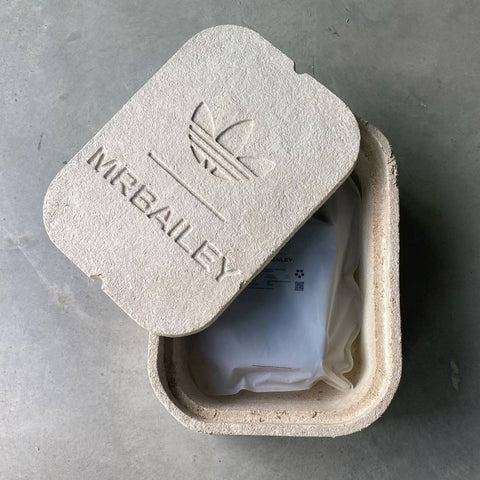THE ROLE OF FUNGI IN ENVIRONMENTAL HEALTH AND SUSTAINABILITY – EXPLORING THE SOLUTIONS
Fungi are an essential part of our ecosystem and play a critical role in maintaining environmental health and sustainability. With their ability to break down organic matter, remediate pollutants, and provide sustainable solutions in areas such as food production and materials science, fungi have enormous potential to contribute to a more sustainable future. In this article, we'll explore the many benefits of fungi and their role in promoting environmental health and sustainability.
FUNGI AND ENVIRONMENTAL HEALTH
Fungi play a vital role in maintaining environmental health by performing a range of functions that benefit the ecosystem. One of the most important roles of fungi in environmental health is their ability to break down and recycle organic matter.
They are nature's recyclers and decomposers, breaking down dead plant and animal material and recycling it back into the ecosystem. They do this by secreting enzymes that break down complex organic compounds into simpler forms that can be absorbed by other organisms. Without fungi, dead organic matter would accumulate and lead to nutrient depletion and reduced biodiversity (1).
In addition to recycling organic matter, fungi also help to maintain soil health. Fungi form mutualistic relationships with plants, in which they exchange nutrients for carbohydrates. This relationship, known as mycorrhizae, is essential for the health and growth of plants. The fungi increase the surface area of the plant's roots, allowing them to absorb more nutrients and water from the soil. In return, the plant provides the fungi with carbohydrates produced through photosynthesis (2).
Fungi also play a crucial role in controlling pests and diseases. Some fungi are natural predators of insect pests and can be used as a biological control in agriculture. For example, the fungus Beauveria bassiana is used to control pests such as whiteflies and aphids in greenhouse crops (3).
Furthermore, fungi have the ability to degrade harmful chemicals and pollutants in the environment. This process, known as bioremediation, involves the use of fungi to break down and metabolize toxic compounds into harmless substances. Fungi can break down a range of pollutants, including pesticides, heavy metals, and petroleum products (4).
FUNGI AND SUSTAINABLE SOLUTIONS
Fungi have the potential to provide sustainable solutions in a variety of areas. One example is in food production, where certain types of fungi are being used to create alternative protein sources. Mycoprotein, a protein-rich food made from the fungus Fusarium venenatum, is one such example (5). Mycelium, the root-like structure of fungi, can also be grown in nutrient-rich conditions to create a meat substitute that is both nutritious and sustainable (6).
They are also being used in new solutions for packaging. Mycelium can be used to create biodegradable packaging materials that can replace traditional plastics. Companies like Ecovative have developed a process for growing mycelium into a range of shapes and sizes to create packaging materials that are completely biodegradable (7). This is an important step towards reducing plastic waste and promoting sustainability in the packaging industry.

Mr. Bailey and Adidas Create Biodegradable Shoe Box from Mycelium
Another area where fungi are providing sustainable solutions is in materials science. Bolt Threads has developed a technology that uses mycelium to create a sustainable alternative to leather. This material, called Mylo, has the look and feel of traditional leather but is completely sustainable and cruelty-free (8). Fungi are also being used to create sustainable building materials, such as insulation and bricks, as well as textiles and dyes (9).
FUNGI AND FASHION
Fungi have recently found their way into the world of fashion, with designers experimenting with mushroom-based materials to create sustainable and eco-friendly clothing. The idea of using fungi in fashion is not a new one, as traditional mushroom-dyeing techniques have been used by indigenous cultures for centuries. However, recent advancements in mushroom-based materials have led to more innovative applications.
One example of this is MycoTEX, a Dutch company that creates a leather-like material from mycelium, the vegetative part of fungi. This material can be grown into any shape or size, making it highly versatile for fashion applications. MycoTEX has collaborated with several fashion designers to create sustainable clothing using their mycelium-based material.
Another company making waves in the world of fungi fashion is Bolt Threads. They have developed a technology that allows them to create a strong and flexible material called Mylo™ from mycelium. Mylo™ has similar properties to leather and can be used to create a variety of fashion products, including bags, shoes, and jackets. The company has collaborated with major fashion brands such as Stella McCartney to create sustainable and eco-friendly clothing (10).

Mylo™ and Stella McCartney collab
Using fungi-based materials in fashion is not only environmentally friendly but also ethical. Traditional materials such as leather and silk involve animal cruelty and contribute to deforestation, water pollution, and carbon emissions. Fungi-based materials, on the other hand, are cruelty-free and have a significantly lower environmental impact.
CONCLUSION
Fungi are an incredibly diverse and versatile group of organisms that have enormous potential to contribute to environmental health and sustainability. Their ability to break down organic matter, remediate pollutants, and provide sustainable solutions in areas such as food production and materials science makes them an important tool in the fight against climate change and environmental degradation. By exploring the many benefits of fungi and promoting their use in sustainable solutions, we can work towards a more environmentally conscious and sustainable world.
REFERENCES
- https://www.amnh.org/exhibitions/fantastic-fungi/the-fungi-around-us
- https://www.biologydiscussion.com/fungi/the-role-of-fungi-in-ecological-systems/35621
- https://www.sciencedirect.com/science/article/pii/B9780128096338212380
- https://doi.org/10.1080/00275514.1995.12026292
- https://onlinelibrary.wiley.com/doi/full/10.1046/j.1467-3010.2002.00236.x
- https://www.theguardian.com/food/2019/jul/22/the-magic-of-fungi-how-mushrooms-could-soon-replace-meat
- https://ecovativedesign.com/what-we-do/
- https://www.boltthreads.com/mylo/
- https://link.springer.com/article/10.1186/s40694-016-0020-9
- https://www.voguebusiness.com/technology-and-innovation/the-future-of-fashion-is-fungi-sustainable-materials-leather-silk-mushrooms
